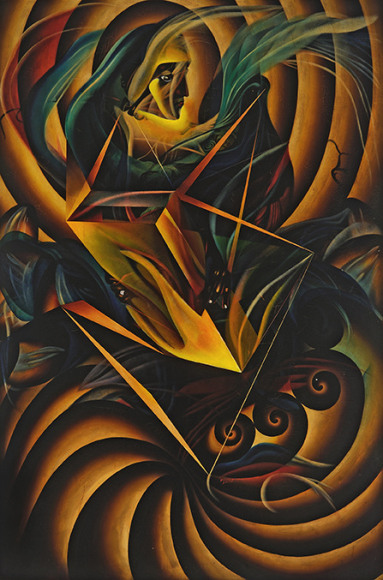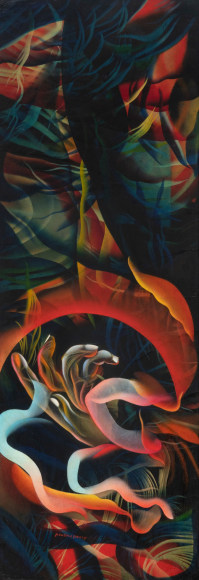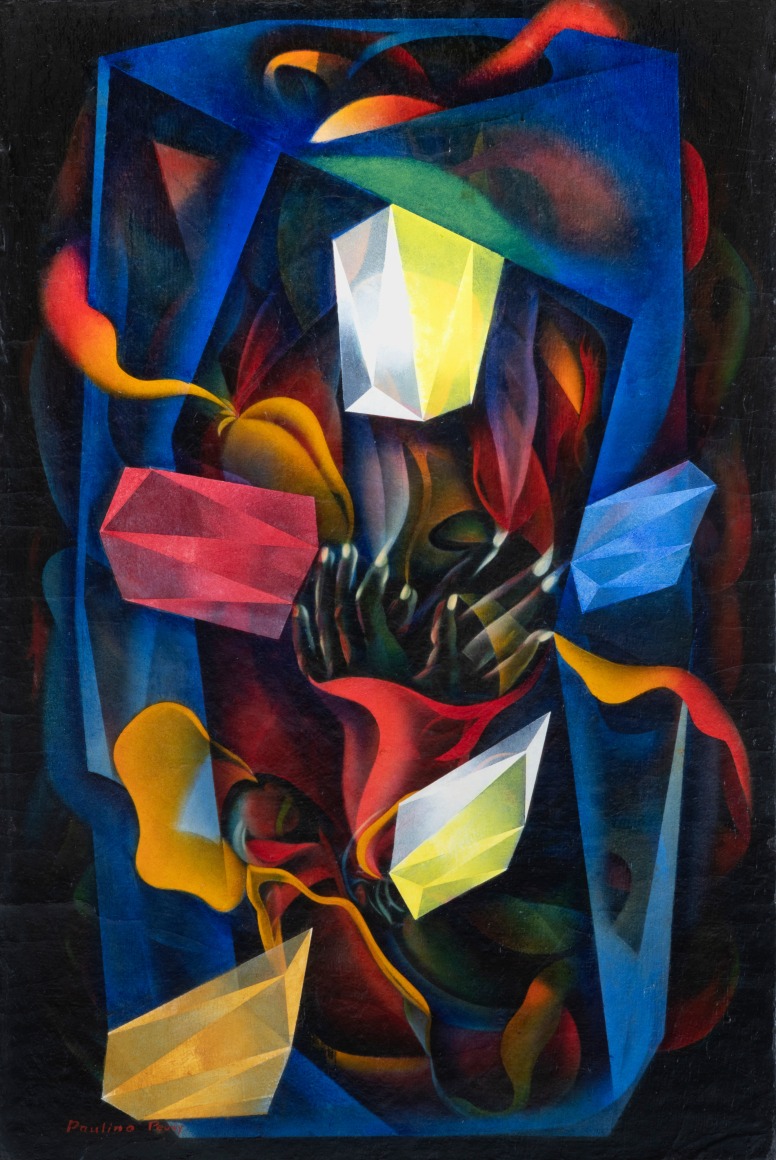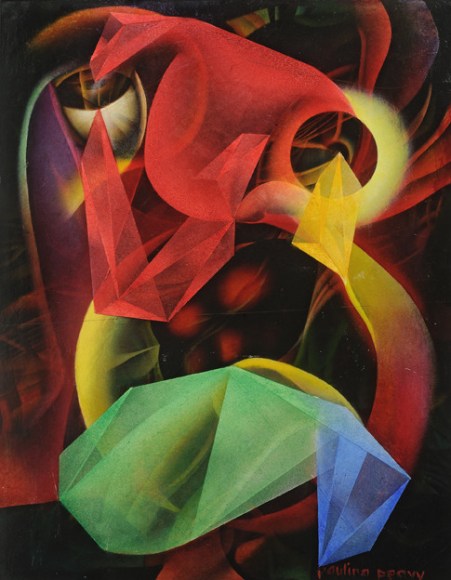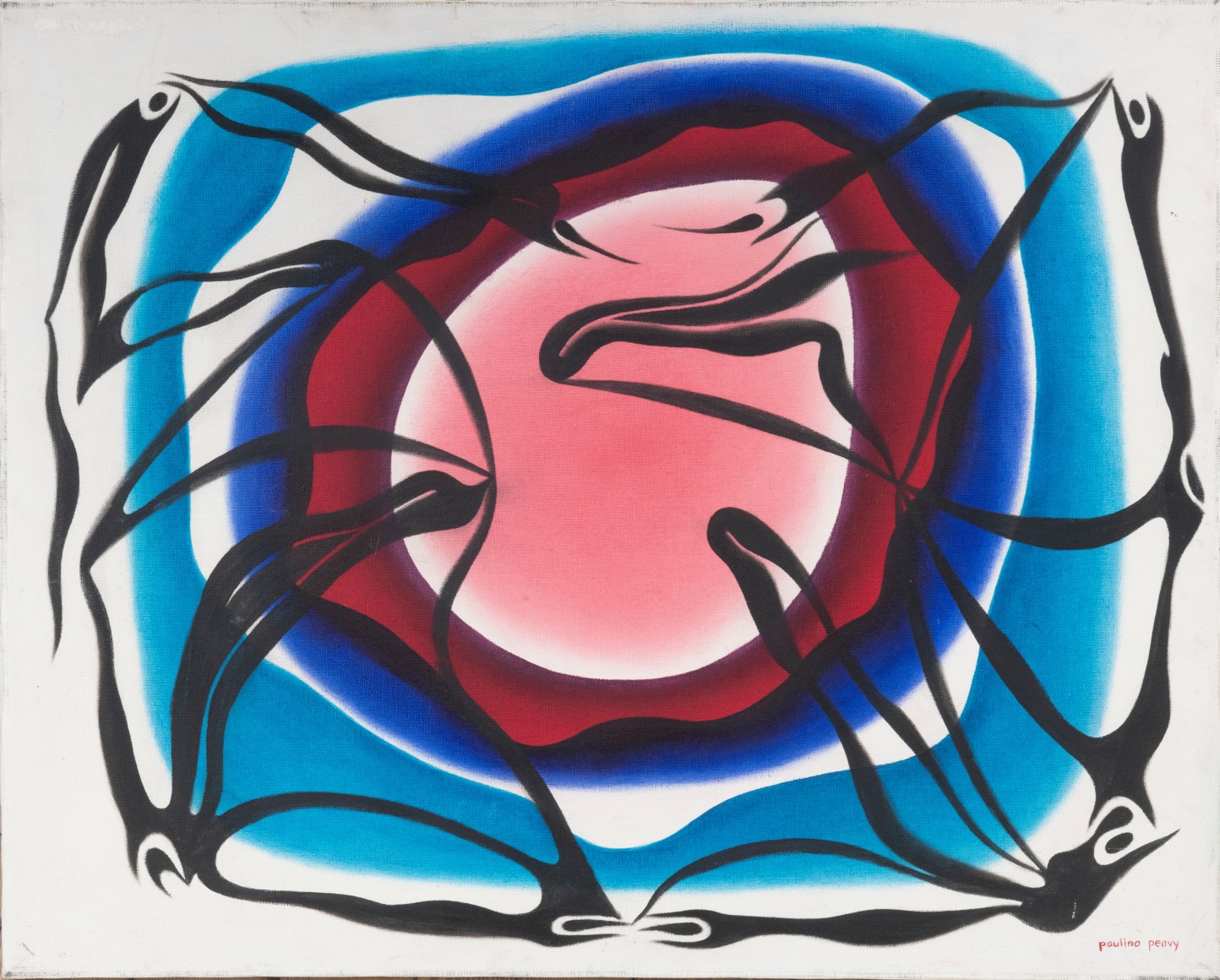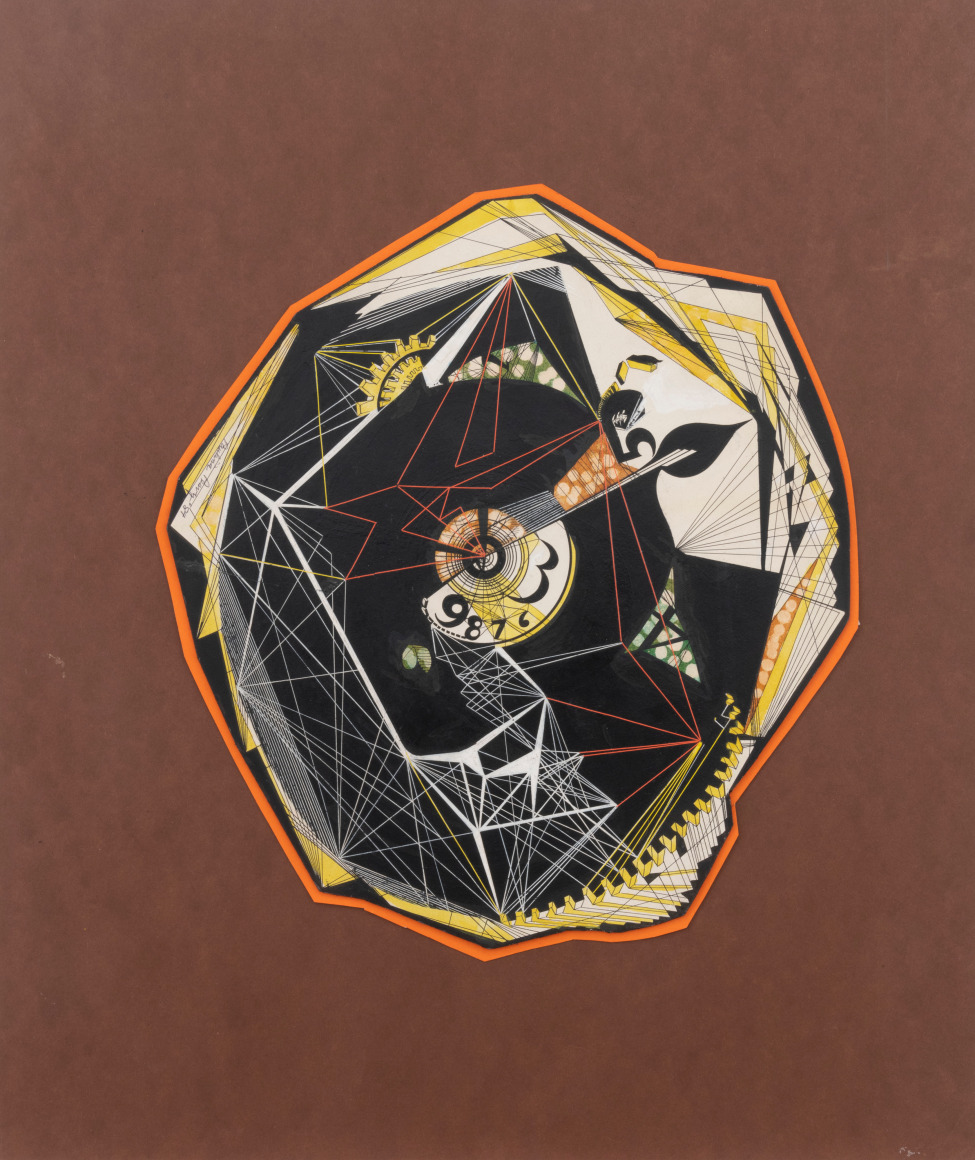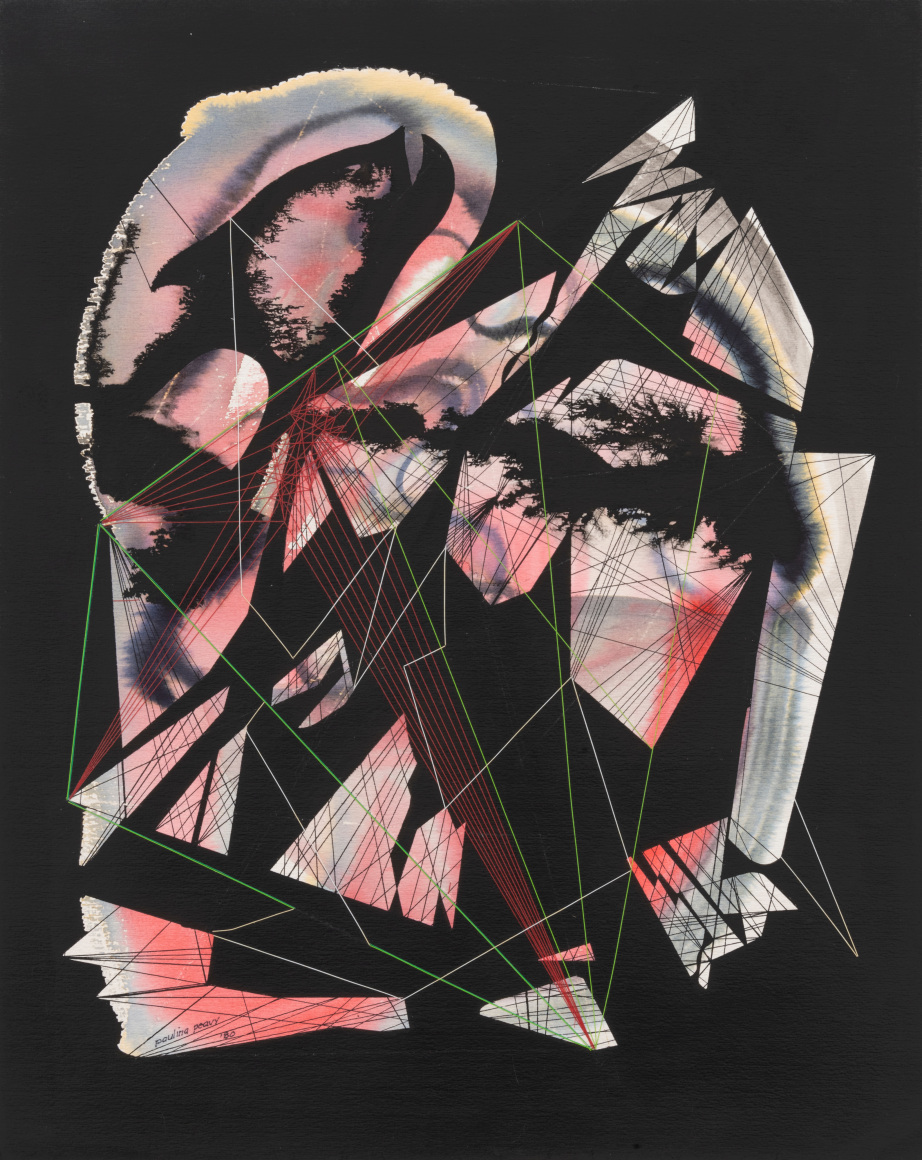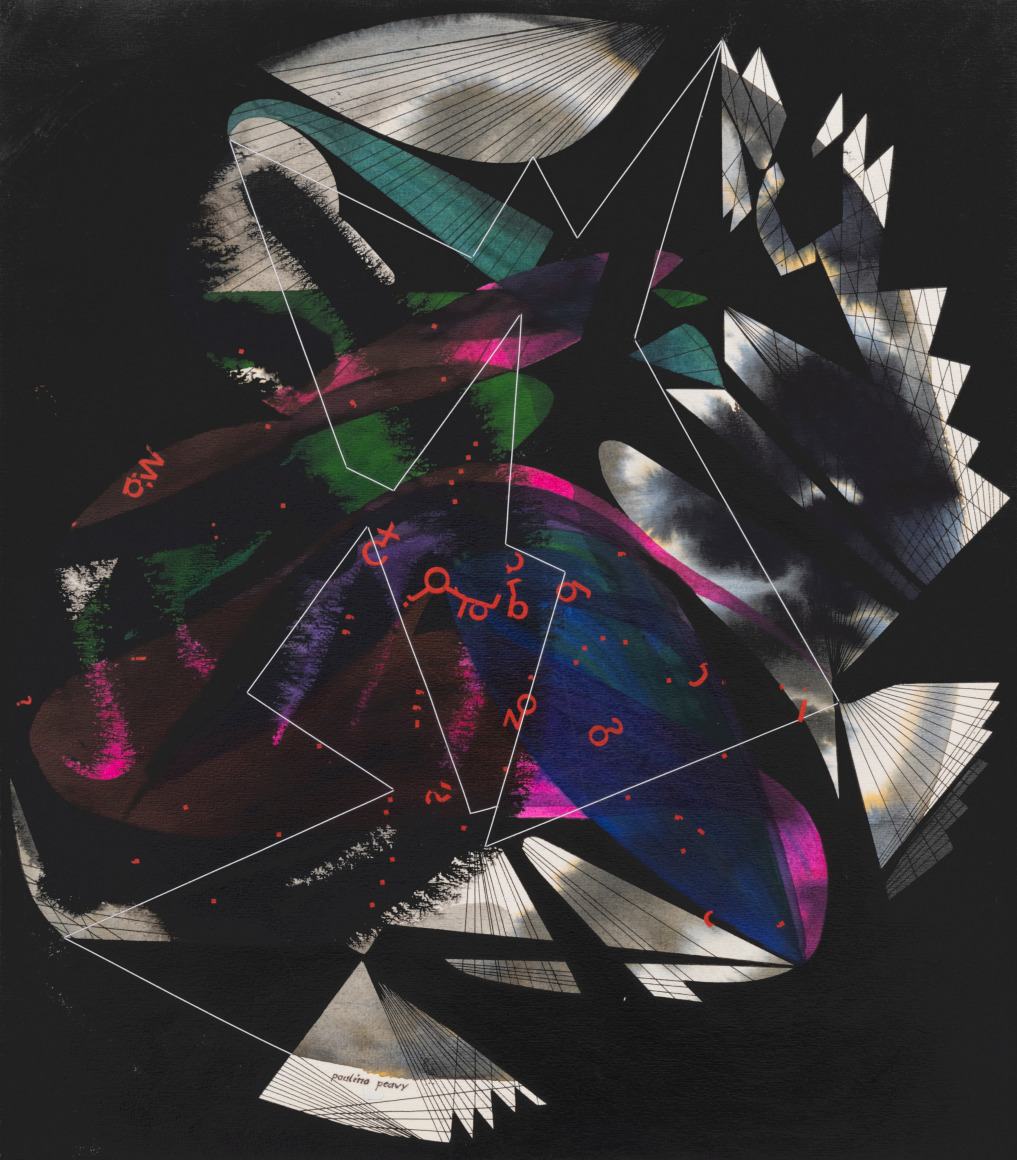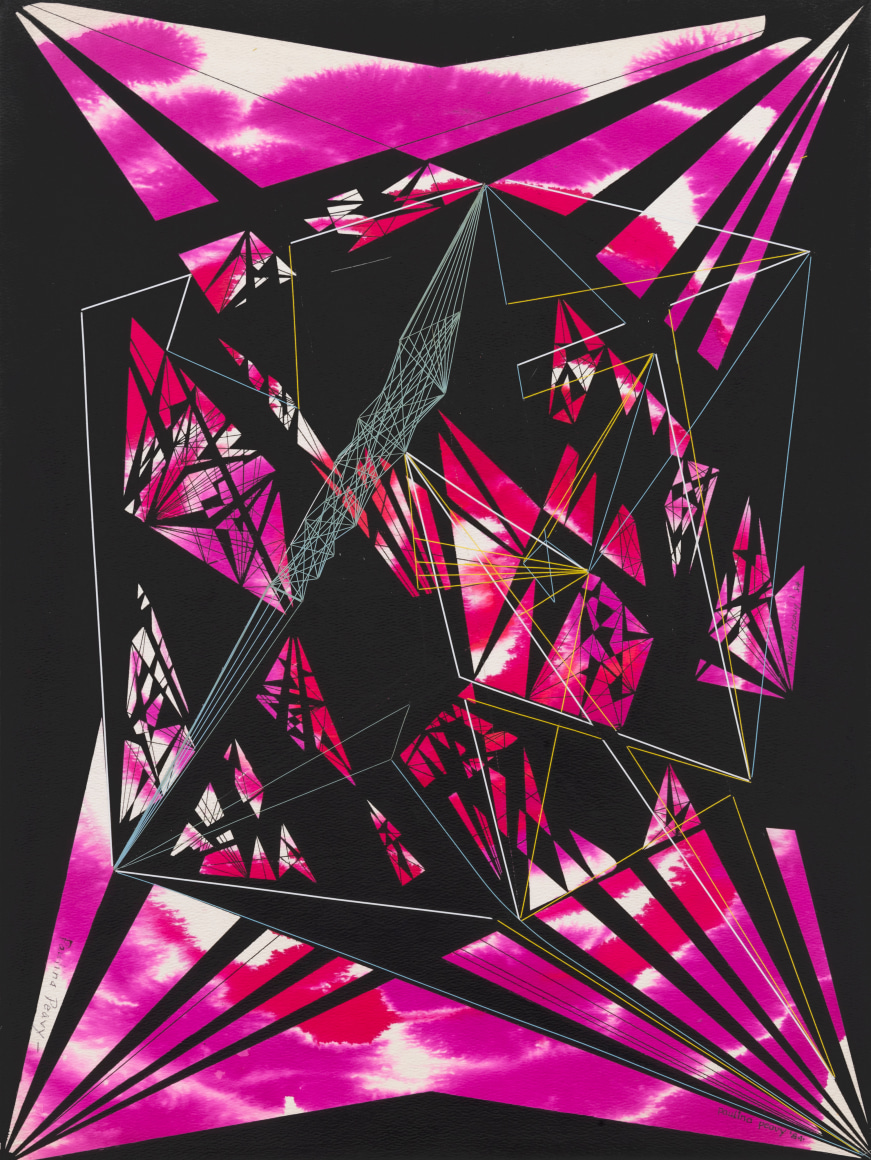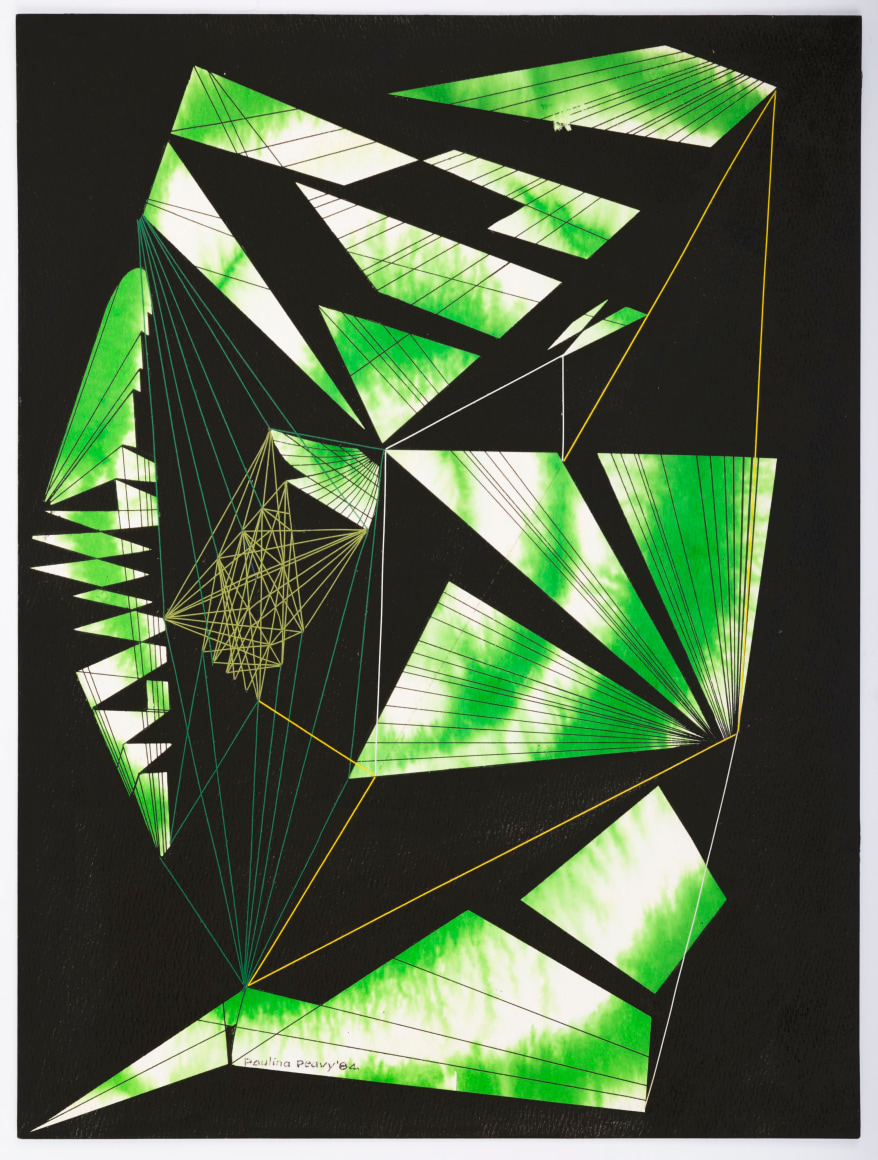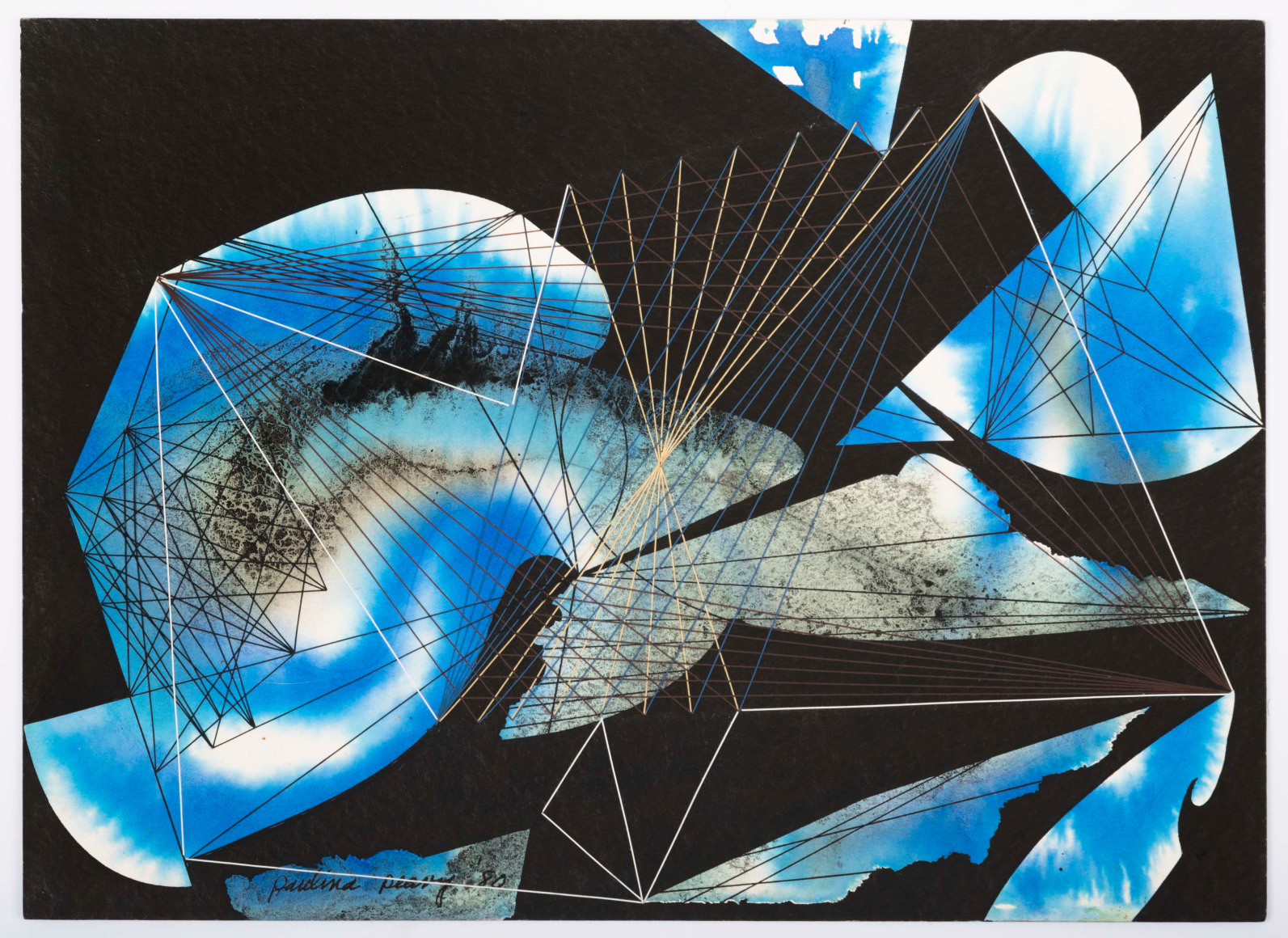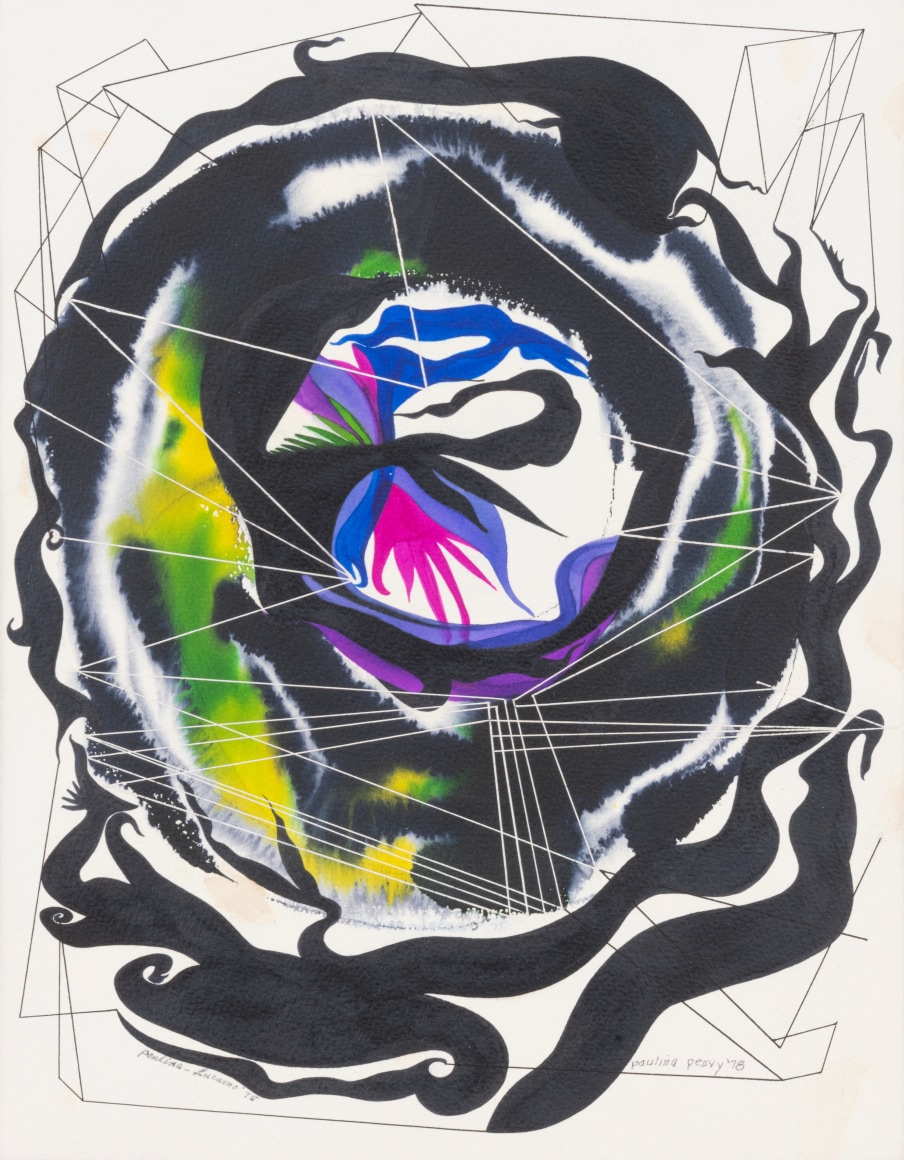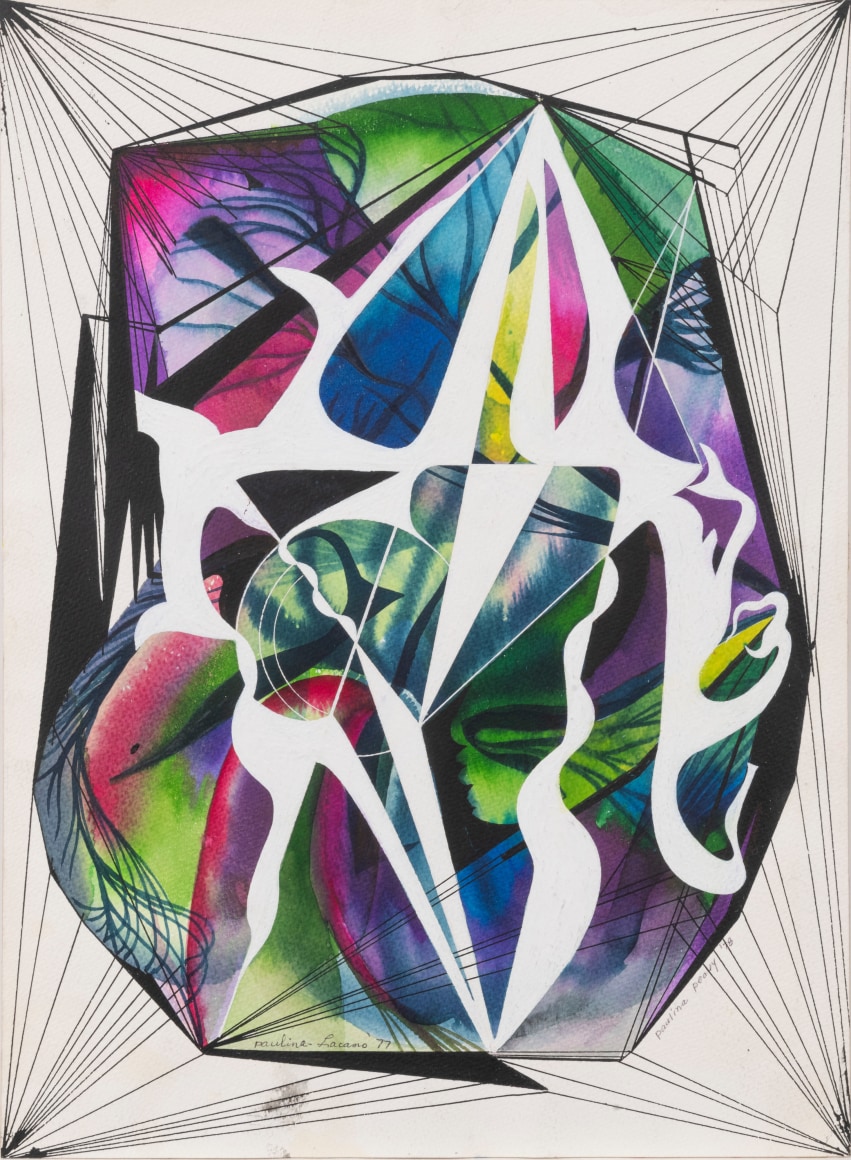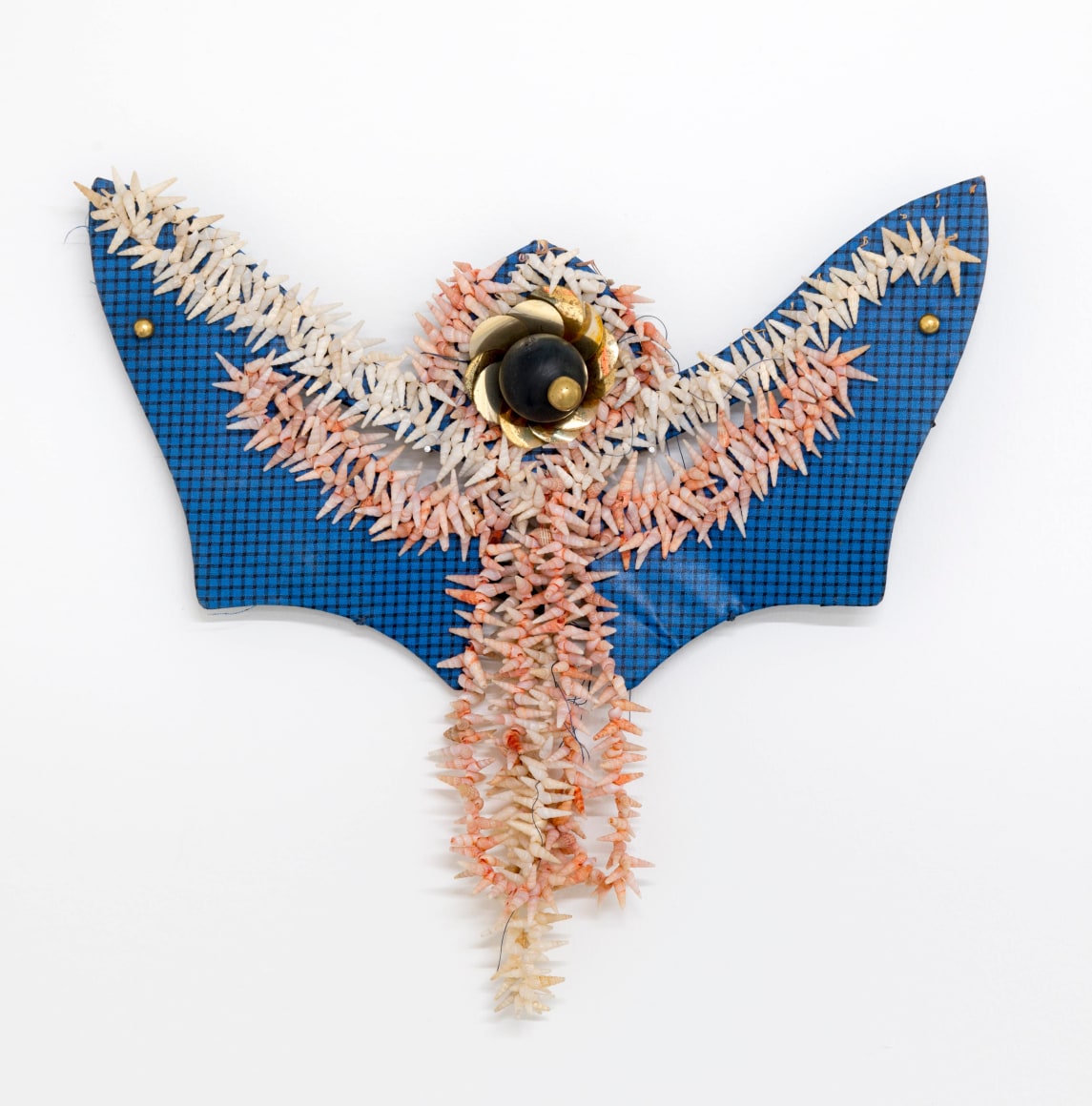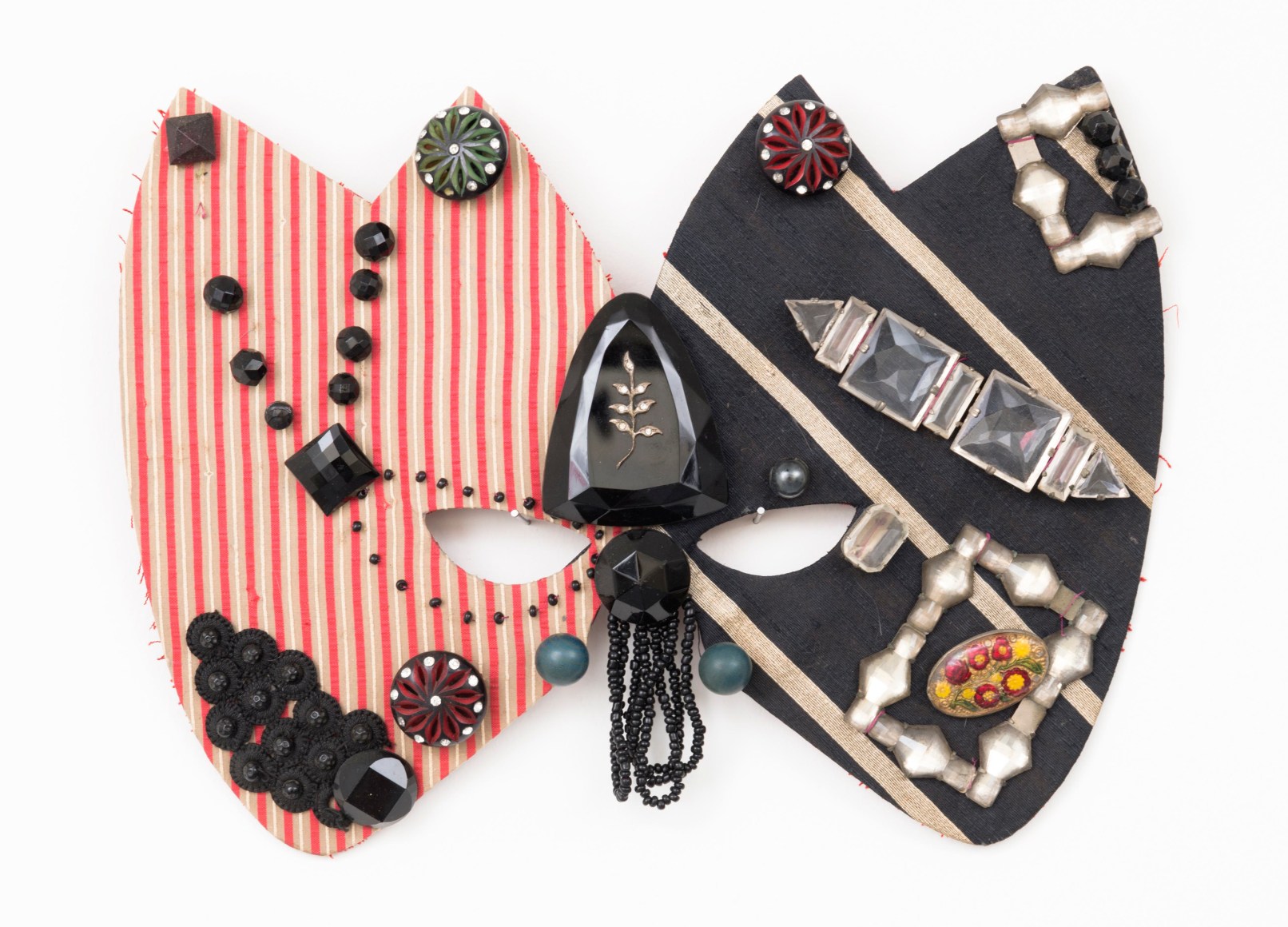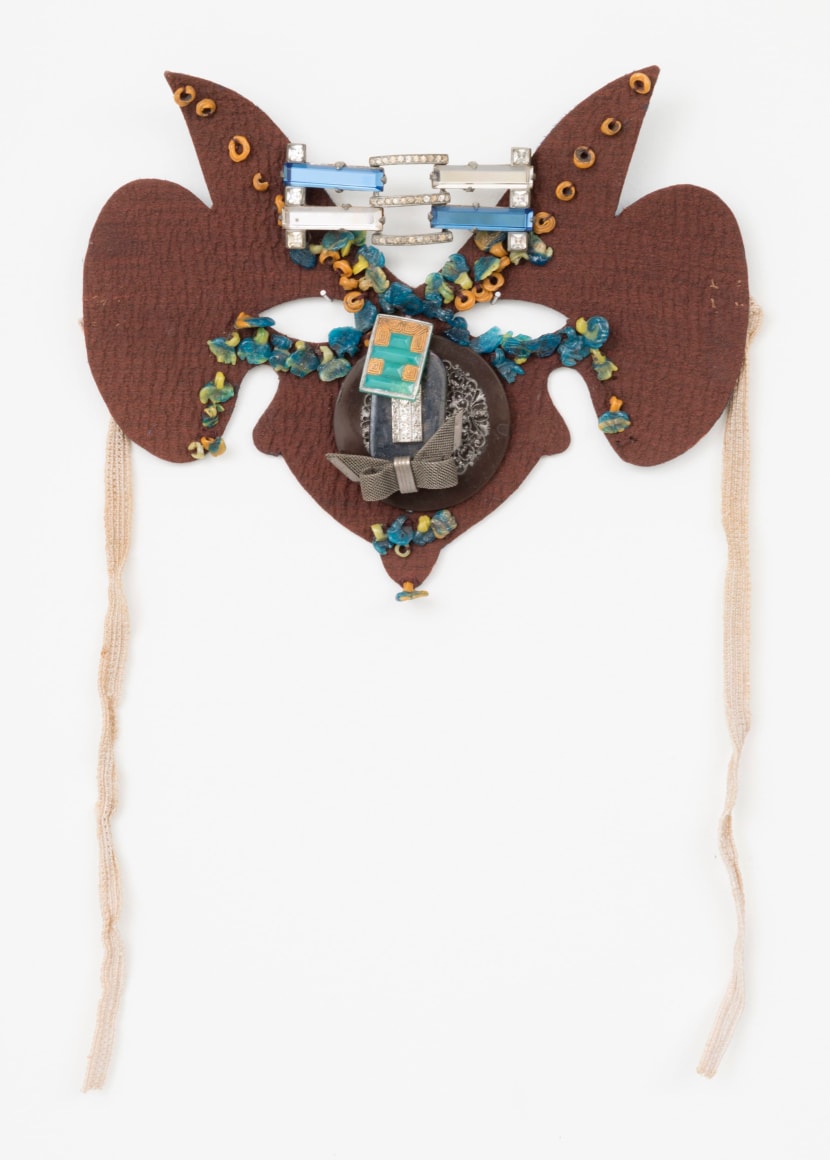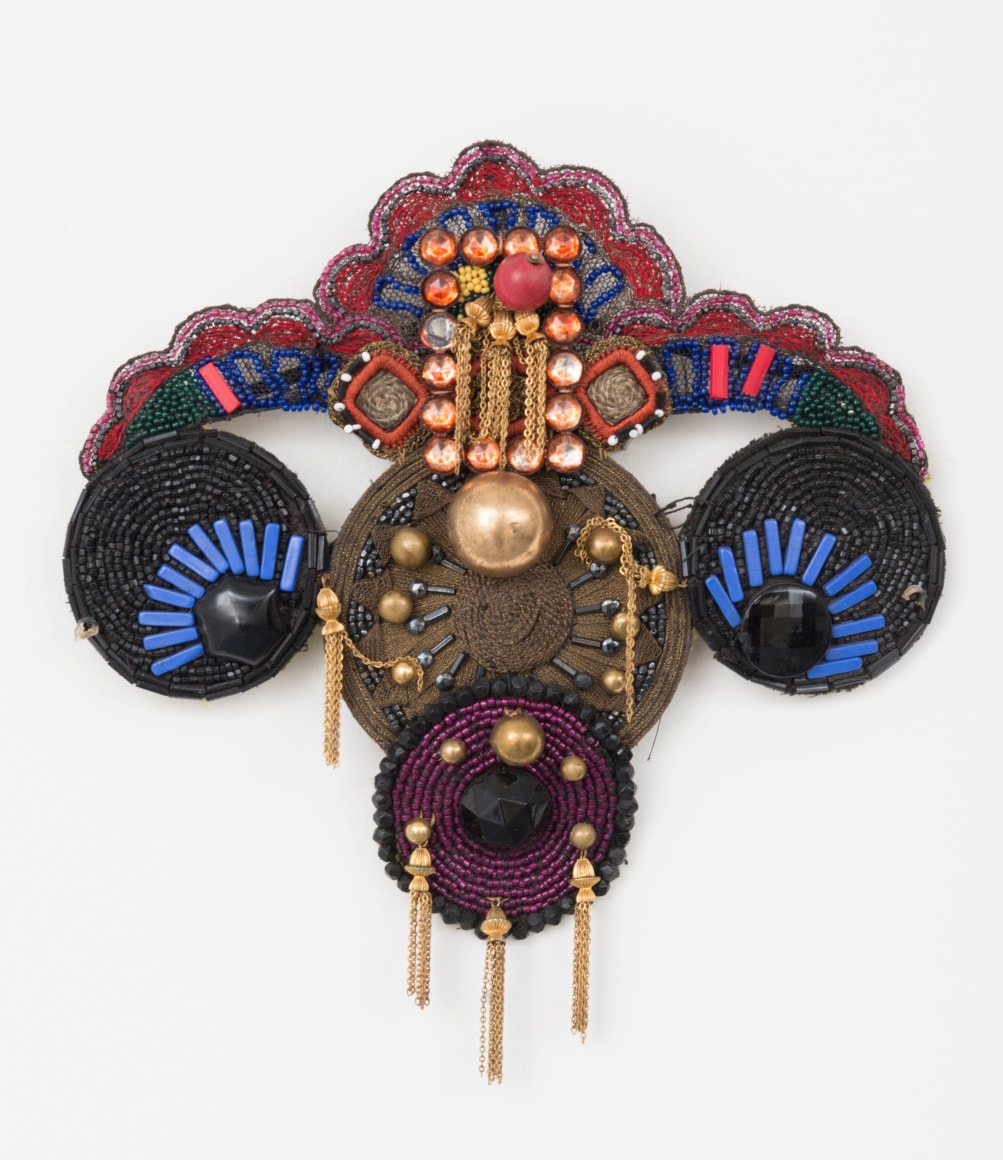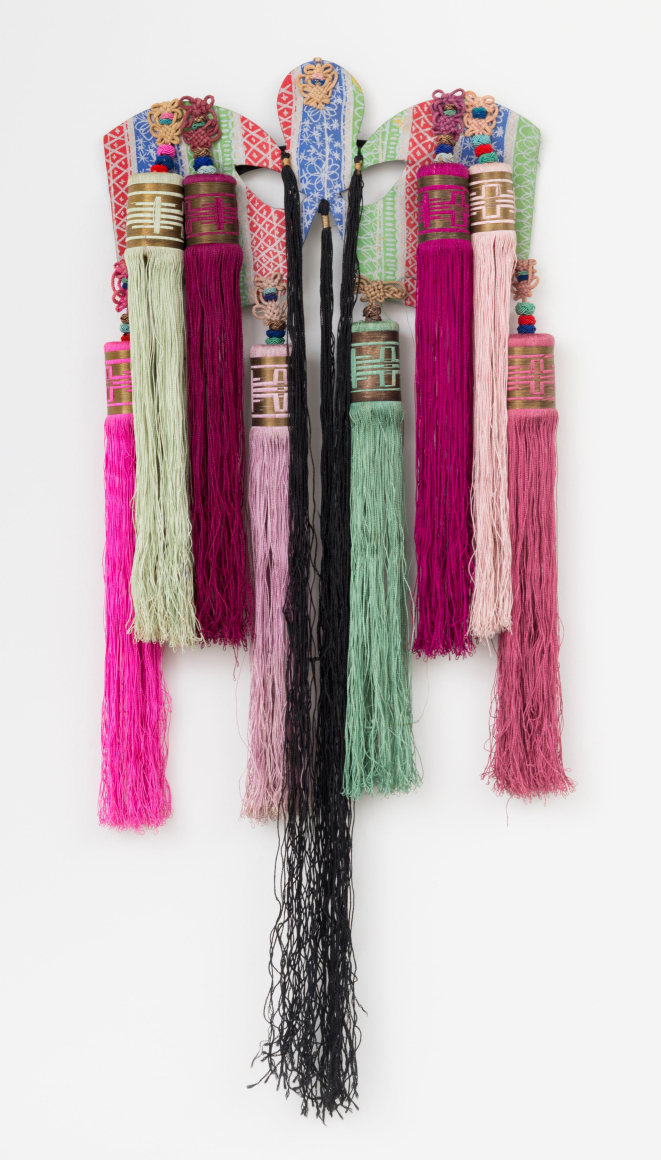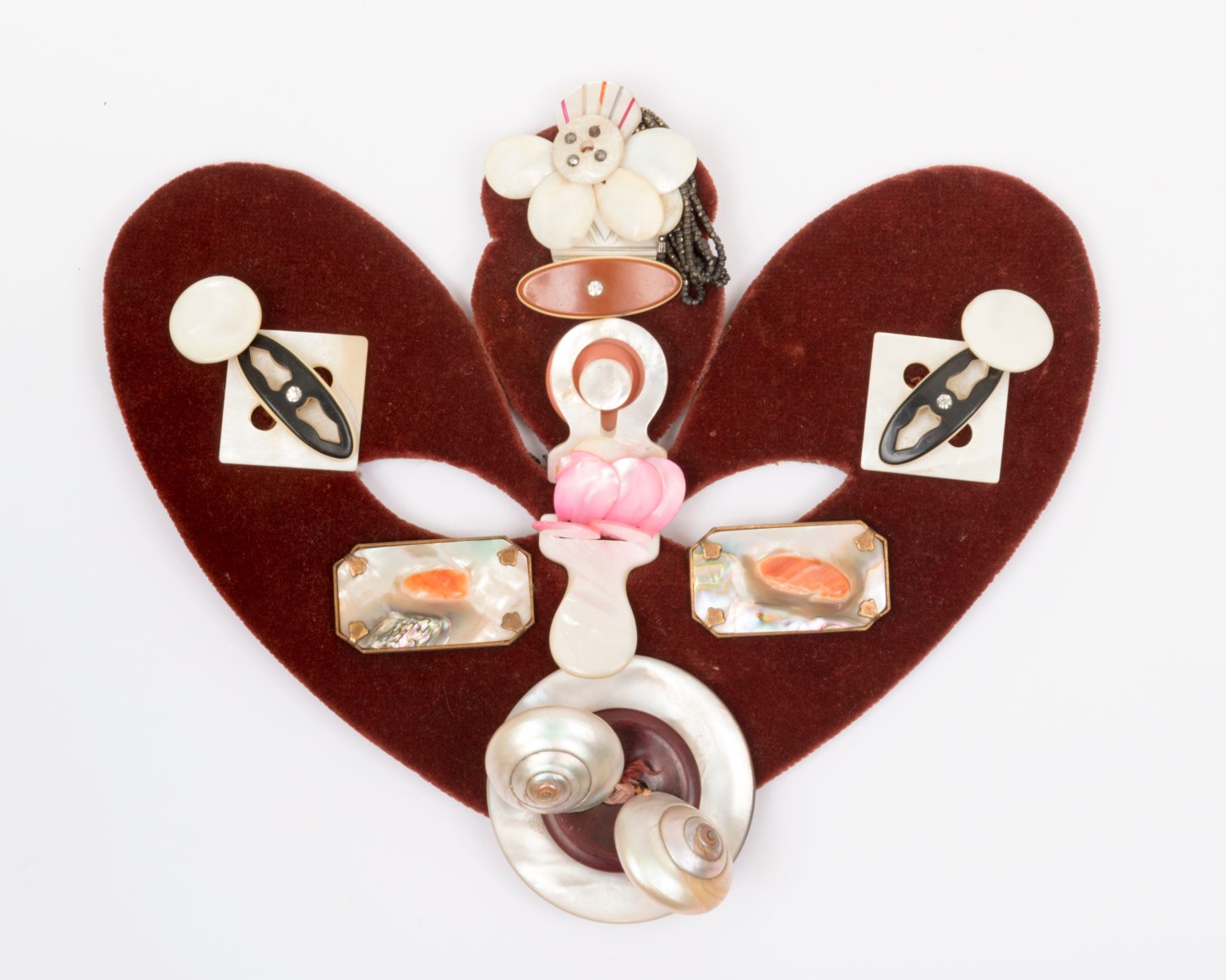There are few figures in the world of arts and culture who have conjured a worldview so fully complete in its internal logic and yet as terrifyingly radical as Paulina Peavy (1901-1999). Peavy’s artwork, writings and films appear to those of us mired in conventional reality as unhinged. She painted while wearing a mask and served as a channel for a being she described as her personal “UFO,” a highly evolved teacher from the future named Lacamo. The ability Lacamo gave her to see past and future helped make her artwork indescribable and breathtaking in its sumptuous timelessness and world-making, or perhaps world-saving, ambition.
For Peavy’s first full solo exhibition in New York with her collaborator Lacamo fully credited, Andrew Edlin Gallery will feature a group of luscious multilayered paintings in which abstract motifs resolve into mystic figures. Both abstraction and figures illustrate the cosmology her UFO revealed to her as well as scores of more analytical drawings. Much of her work was created over decades and altered as Lacamo desired so any strict chronology proves elusive. In the back gallery one of several surviving films explains her thoughts and processes in the manner of a public television science special. These films share space with the spectacular hand bejeweled masks she donned to leave quotidian life behind and better allow Lacamo to paint with her.
Since Paulina Peavy’s artwork and writings deal with future-sex, post masculine gender roles and mankind’s place in the universe, her visionary practice sits in a long trajectory with Joseph Campbell, Hilma Af Klimt, Forest Bess, Larry Mitchell, Valerie Solanis, and Agnes Pelton. Peavy would not likely have seen other earthbound visual artists as part of her tribe given that Lacamo stated that “no artist in your world could endure such a stretching of emotions.” It is productive to inquire into the nature of the collaboration between Lacamo and Peavy that led to such an extraordinary body of beautiful paintings, drawings and masks.
This emissary from the future, Lacamo, was first encountered at a seance in Los Angeles in the 1930s - a period of city wide explorations of the paranormal by writer/philosophers like Aldous Huxley, Gerald Heard and Christopher Isherwood, all of whom were pursuing esoteric spiritual wisdom across cultural lines. Peavy manifests a desire to find universal truths in cryptic form in the texts and artifacts of ancient cultures, an
emerging concern amongst unconventional intellectuals at that time. Lacamo continued to teach Peavy and co-author artworks with her for over 50 years. For Peavy, Lacamo existed beyond human conceptions of gender and identity, and also revealed to her a future in which a female-based single sex reproduction would make men redundant. Lacamo was a mystic teacher and merely assumed a name to be comprehensible to Peavy’s limited human mind. Lacamo instructed Peavy to cross out proper nouns in the Bible and restore it from a male mistranslation to a document of pure scientific reality. Like in Solanis’ Scum Manifesto, men are merely an unnecessary evil. Like Bess and Af Klimt, her paintings are not created but revealed to her beyond normal conceptions of authorship, their meanings to be understood to their physical maker over a long span of time.
The vast majority of Peavy’s works are hard to date as she saw them not as paintings for galleries but as teaching tools, and therefore kept altering them, sometimes for decades. While she did exhibit during her lifetime, most notably at the Golden Gate International Exposition in 1940 (San Francisco) alongside celebrated figures like Diego Rivera, she explains in her writings and films that her mission with Lacamo transcended mere artistic ambitions. She felt able to decode wisdom from ancient times (that had been mistranslated by underdeveloped men), helping us to evolve and bring about a better future.
Bill Arning is a contemporary art advisor, curator and critic based in Houston. From 2009-2018 he was the director of the Contemporary Arts Museum Houston. Previously, Arning was curator at MIT’s List Visual Arts Center (2000–2009), and was thge director of White Columns, New York (1985-1996), where he organized groundbreaking first solo shows for artists such as John Currin, Marilyn Minter, Andres Serrano, Richard Phillips, Cady Noland, and Jim Hodges. His writing has appeared in Artforum, Apollo, Art in America, Out, and Parkett, and he has contributed to many international publications, including exhibition catalogues on Keith Haring, Christian Jankowski, and Donald Moffett.

